Black Rice Benefits: 14 Powerful Health Perks For 2025
From fighting cancer to helping lose weight – this unique rice can do wonders!
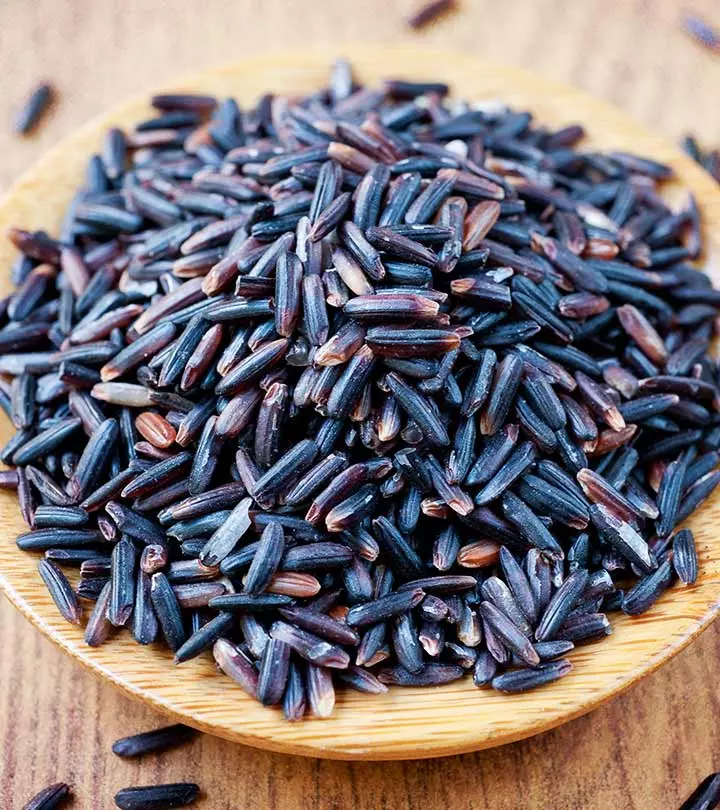
Image: ShutterStock
When we talk about rice, we generally refer to white rice. But do you know what is black rice? Have you ever heard of it? Also known as forbidden rice, black rice benefits are attracting the attention of many health enthusiasts. Rice is an inseparable part of the Asian diet, and black rice is also being included for its benefits.
This rice was grown in limited quantities in China. Only the nobility and royalty consumed it, and every extra grain was seized. Hence, it got its name – forbidden rice.
Although the consumption of black rice is seen worldwide, it was first introduced to the United States only in 1995. Since then, it has been slowly popularized and is now available in many supermarkets. Learn more about this unique grain, its nutrition facts, and its benefits. Read on.
 Know Your Ingredient: Black Rice
Know Your Ingredient: Black RiceWhat Is It?
A range of rice that belongs to the Oryza sativa L. species. It is dark in color due to the presence of anthocyanin pigments.
What Are Its Benefits?
It helps lower weight and prevents cancer. It improves brain, liver, and heart health and is also effective for asthma and eye health.
Who Can Use It?
Anyone can consume black rice.
How Often?
Can be consumed daily in moderation.
Caution
No known side effects.
In This Article
What Is Black Rice/Forbidden Rice?
Many people ask, “Is white rice healthy?” While white rice won’t harm you, it is not as healthy as black rice. Black rice is the name of a range of rice that belongs to the Oryza sativa L. species. This indica species of rice grows best in tropical zones like China, Japan, Korea, Myanmar, and North East India. The two main varieties of black rice found in the market are Indonesian black rice and Thai jasmine black rice.
The fact that rice is consumed in high quantities in Asian countries has been found to be associated with their lower rates of cancer and cardiovascular diseases. This phenomenon has been credited to the high antioxidant content of black rice.
Since black rice has a pigmented bran fraction, its extracts are used as a natural coloring agent in foods like bread and liquor.
As for the name ‘forbidden rice’, there is a lot of speculation about its origin. However, the most popular (and plausible) reasoning is that it was reserved only for Chinese royalty and common folk were banned from eating it due to its superior quality.
 Trivia
TriviaThis had me wondering if black rice has become a trendy superfood only because of its novelty or if it actually has an impressive nutrient profile. Here’s what I found out…
Key Takeaways
- Black rice helps maintain cholesterol levels in the body.
- The antioxidants in black rice can help improve eyesight and reduce inflammation.
- Black rice aids in maintaining normal blood sugar levels in the body.
- It also aids in reducing oxidative stress, thereby supporting healthy brain function.
Black Rice / Forbidden Rice Nutrition Facts
| Nutritional Value Per 1 Cup Of Black Rice (Cooked) | ||
|---|---|---|
| Calories | 160 gms | |
| Total fat | 2 gms | |
| Cholesterol | 0 mg | |
| Sodium | 4 mg | |
| Potassium | 268 gms | |
| Total carbs | 34 gms | |
| Dietary fiber | 3 gms | |
| Sugar | 0 gms | |
| Protein | 5 gms | |
| Iron | 6% (of daily value) | |
As you can see, black rice is low in calories, which makes it great for people who want to lose weight without giving up rice. It is also a rich source of flavonoid phytonutrients that are essential for protecting us from a number of diseases and maintaining the healthy functioning of our brain.
Black rice also contains lots of fiber that is good for maintaining our digestive health. It is also a great source of plant-based protein (which is great news for vegetarians and vegans!) and provides minerals like iron and copper. But what makes black rice so unique is its high level of anthocyanin content, which lends it its powerful antioxidant property that helps to reduce chronic inflammation.
If you’re still not convinced about the nutritional superiority of black rice over all the other types of rice, just take a look the comparison below. (Serving size: 100 g)
- Polished white rice – 6.8g protein, 1.2g iron, 0.6g fiber.
- Brown rice – 7.9g protein, 2.2g iron, and 2.8g fiber.
- Red rice – 7.0g protein, 5.5g iron, and 2.0g fiber.
- Black rice – 8.5g protein, 3.5g iron, 4.9g fiber.
Black rice beats all other rice types when it comes to protein and fiber and only loses out to red rice in terms of its iron content.
Now that it’s evident that black rice houses a ton of nutrients, let’s turn our attention to all the health benefits it has to offer.
What Are The Health Benefits Of Black Rice?
The main components of black rice that lend it almost all of its health benefits are anthocyanins. These proteins work as powerful antioxidants and serve a number of functions like fighting cancer, improving digestion, preventing cardiovascular diseases, maintaining healthy brain functioning, etc., thereby increasing the longevity of life. Its fiber content is another major factor that we need to consider. Let’s now dive right into the benefits.
1. Is A Rich Source Of Antioxidants
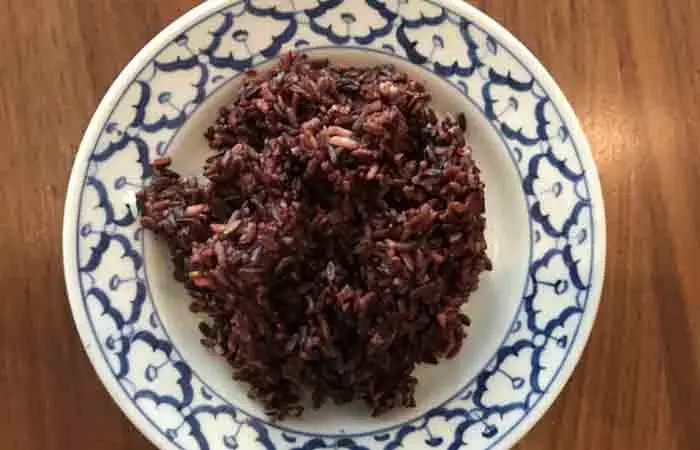
When it comes to antioxidant content, no other ingredient comes close to black rice. The bran of (outermost layer) of the grains of black rice contains the highest levels of anthocyanins found in any food. In fact, it has the highest anthocyanin content compared to all other whole grain varieties like brown rice, red rice, and red quinoa (1). The health benefits of brown rice are well known. These anthocyanins have been found to fight against free radical damage, prevent cardiovascular disease, and treat microbial infections and diarrhea (2).
2. Fights Cancer
The anthocyanin content of black rice lends it an anti-cancer characteristic. An experimental study conducted by the Third Military University in China found that an anthocyanin-rich extract of black rice successfully suppressed tumor growth and spread of breast cancer cells in mice (3).
3. Reduces Inflammation
Researchers at Ajou University in Korea have found that black rice works wonders as an anti-inflammatory ingredient. The study found that an extract of black rice helped reduce edema and significantly suppressed allergic contact dermatitis on the skin of mice. This is a great indicator of the potential of black rice in treating diseases that are associated with chronic inflammation (4).
4. Aids Weight Loss

Black rice has characteristics that are essential for weight management and weight loss – it is low in calories, low in carbohydrates, and high in dietary fiber. Thus, it makes you feel full and keeps hunger pangs at bay.
In fact, a study conducted in Korea tested the difference in weight loss brought about by white rice and a mix of brown rice and black rice in 40 overweight women in 6 weeks. At the end of the study, they found that the brown/black rice group showed significantly higher weight loss and lower body mass index (BMI) and body fat percentage than the group that consumed white rice. This just goes to show that both brown and black rice can work exceptionally well in diet therapy for obese women (5).
5. Protects Heart Health
Protect your heart health by replacing white rice with black rice in your daily diet. As we already know, high cholesterol is a leading cause of a number of cardiovascular diseases. But the anthocyanin content of black rice has been found to have a significant effect in reducing cholesterol in rats in multiple research studies (6), (7), (8).
Atherosclerosis is a cardiovascular disease in which the arteries get clogged due to the build-up of plaque. This could lead to a number of other serious problems like coronary artery diseasei A condition in which blood flow to the heart is obstructed due to plaque deposits in the coronary arteries. , stroke, peripheral artery disease, or kidney problems. But there’s good news! Consumption of black rice was found to reduce atherosclerotic plaque build-up in rabbits by a whopping 50% (9).
Though all these studies have been conducted on animals, it is safe to assume that black rice could produce similar effects on humans as well.
6. Helps In Liver Detoxification
Fatty liver disease is, as is obvious, characterized by excessive fat deposit build-up in the liver. The effectiveness of black rice in treating this condition was tested in mice. The results showed that the antioxidant activity of the black rice extract regulated the metabolism of fatty acids and reduced the levels of triglyceridei A type of converted waxy fat stored in the body and used to give the body energy between meals. and total cholesterol, thus reducing the risk of fatty liver disease (10).
7. Aids Healthy Brain Function

Many researchers believe that oxidative stress has a detrimental effect on cognitive functioning. Hence, antioxidants like anthocyanins (that are found in black rice) could work to reduce this oxidative stress and maintain healthy brain functioning.
A study conducted by the Medical University in Bulgaria found anthocyanins to improve learning and memory functioning in rats that were suffering from an estrogen deficit (11).
Another six-year-long study conducted on 16,000 adults found that long-term consumption of anthocyanin-rich foods slowed down the rate of cognitive decline by up to 2.5 years (12).
8. Helps Prevent Diabetes
Whole grain black rice has its bran intact, which is a storehouse of dietary fiber. Since fiber takes longer to digest, it makes sure that the sugar in the grain is absorbed over a longer period, helping in blood sugar control. Thus, it helps to prevent insulin levels from spiking up and can help prevent type 2 diabetes. In fact, in a study conducted on rats, the extract of germinated Thai black rice performed much like the diabetes drug metformin and also prevented and managed the consequences of diabetes mellitus (13).
9. Improves Digestive Health
As we saw in the nutrition profile, black rice is a rich source of dietary fiber. This dietary fiber ensures that you have regular bowel movements and prevents bloating and constipation. Additionally, it can help treat a number of other gastrointestinal disorders like gastroesophageal reflux disease, duodenal ulceri An ulcer that develops in the lower part of the small intestine and causes burning sensations above the naval. , diverticulitisi Infection or inflammation of the small pouches in the digestive tract that causes symptoms like abdominal pain, fever, and nausea. , constipation, and hemorrhoidsi Also known as piles, a condition characterized by inflamed veins in the rectum due to chronic constipation or pregnancy. (14).
10. Is Naturally Gluten-Free
One in every seven people is sensitive to the protein gluten that is present in all wheat, barley, and rye products. This gluten sensitivity can give rise to many uncomfortable symptoms like constipation, diarrhea, bloating, and a high risk of developing leaky gut syndrome. Luckily, black rice is completely free of gluten. So, people who are sensitive to gluten or are suffering from Celiac Disease (confirmed allergy to gluten) can add black rice to their daily diet to fulfill their daily requirement of protein and fiber.
11. Protects From High Blood Pressure

The dietary fiber that we get from black rice (or any whole grains in general) has been found to protect cardiovascular health by not only maintaining normal blood pressure but also by reducing lipid levels, regulating body weight, improving glucose metabolism, and reducing chronic inflammation (15).
12. Treats Asthma
The anthocyanins found in black rice can be effective in treating asthma. A study conducted in Korea found that anthocyanins could treat (and even prevent) asthma by reducing the inflammation in the airways and mucus hypersecretion associated with this respiratory disorder in mice (16).
13. Good For The Eyes
The anthocyanins found in black rice have long been known to improve eyesight (17). A study conducted on rats found that the anthocyanidins extracted from black rice were highly effective in preventing and reducing the retinal damage caused by a fluorescent light (18).
14. May Promote Healthy Skin
Black rice is rich in antioxidants, like anthocyanins, that may help fight free radical damage to protect your skin from aging and damage caused by UV rays and pollution (19). It may also help boost collagen production to support skin elasticity and hydration. This makes black rice a great choice for healthy, glowing skin.
Isn’t it amazing to see how many ways you can improve your health by just making one minor adjustment in your daily diet? Keep reading to discover some more interesting facts about this superfood.
Black Rice Fun Facts
- Due to its steadily growing popularity, black rice can now be found in all continents except Antarctica.
- Don’t be surprised if you hear someone referring to black rice as purple rice. It’s because the color of black rice changes into deep purple after being soaked or cooked.
- Black rice is currently being researched upon as a viable way to prevent Alzheimer’s disease, diabetes, and cancer due to its powerful antioxidant properties.
Now that’s what I call eye-opening information. Want some more of that? Let’s take a look at the differences between black rice and another healthy type of rice, i.e., brown rice.
Black Rice Vs. Brown Rice
While it’s true that both brown rice and black rice are much healthier than their white counterpart, there are still some major differences between the two that you need to know.
- One-third cup of raw brown rice contains 226 calories while the same quantity of black rice contains 200 calories.
- When it comes to carbs, fiber, protein and fat, black rice is healthier than brown rice. This is because it has less carbs and more fiber and protein. In fact, it also beats red rice, purple rice, and polished white rice when it comes to these nutrients.
- Though both black and brown rice contain equal amounts of zinc and phosphorus, black rice wins when it comes to the iron content. It does so by meeting 6% of the daily value of iron and opposed to brown rice’s 5%.
- Black rice contains pigments called anthocyanins that give it its dark coloring. These are powerful antioxidants that fight against cancer and heart disease.
Though the difference in the nutrient and mineral content of brown rice and black rice may seem insignificant, they make a world of difference in the long run. For instance, consuming that extra 26 calories a day from brown rice can lead to a 2.7-pound weight gain in a year’s time!
Well, black rice sure does sound too good to be true when it comes to its nutritive value. Which begs the question, are there any side effects that you need to worry about? The answer will surprise you.
What Are The Side Effects Of Black Rice?
There are no known side effects of black rice that you need to worry about.
I’m sure all these interesting facts about black rice have made you want to get your hands on some of your own. So let’s check out where we can buy this superfood…
Where To Buy Black Rice
Since the health benefits of black rice have become more popular, this exotic superfood has started becoming relatively easier to find in the market. Your local health food store, Asian supermarket or gourmet food chain is sure to be stocked up with black rice.
Now that you’ve gotten your hands on some black rice, keep reading to see how to best cook it so that it’s healthy and tasty.
How To Cook Black Rice
Okay, listen up people, because this is crucial information. If you want to make full use of black rice’s health benefits, you need to know how to cook it properly. Since black rice is unrefined and denser than brown rice, the way you cook it is also slightly different. Here’s what you need to do:
- Soak black rice in water overnight. This will reduce the cooking time considerably. If you’re short on time, you could just soak it for an hour before cooking.
- Pour out the water that the rice was soaking in and wash the rice clean.
- Add two cups of water for every one cup of rice and cook it with a lid covering the top.
- Cook the rice for half an hour if it had been soaked and a full hour if not.
- Test the texture of a couple of grains of rice between your fingers and also pop them in your mouth to check if they’re chewy. If they are, continue cooking until they reach your desired texture.
Now that you know how to cook black rice, let’s take a look at how to effectively select and store it.
How To Select And Store Black Rice
Selection
If you like your black rice to be light, fluffy, and each grain separated, go for a variety that has longer grains. But if you prefer more chewy rice with grains that cling together, short or medium grained black rice will be perfect for you. Make sure you pick up 100% whole grain black rice (it will be mentioned on the packaging) as the majority of the nutritive value is stored in its bran.
Storage
When stored in an airtight container at room temperature, uncooked black rice can last for up to 3 months.
As for cooked rice, it can develop bacteria and cause food poisoning pretty quickly. So make sure you consume it within a day of cooking it. However, if you do want to store it for later consumption, make sure you cool it down completely after cooking it and store it in a covered container in the refrigerator, where it can last for 2 days. Do not reheat this rice more than once and when you do, make sure heat it until it is piping hot.
Still confused about how to start including black rice in your diet? Here are some ideas that you can try out.
How To Include Black Rice In Your Diet
First up, black rice can be eaten with a curry just the way you would eat white rice. Just season it with some salt and pepper, and you’re good to go.
You could also have it with a steak and roasted vegetables if you’re looking for a well-balanced meal.
Another yummy way to incorporate black rice into your diet is by replacing white rice with black rice in your burritos.
Or you could just blitz it up in your food processor and use it for baking bread and rice cakes, making healthy noodles and or as a marinade for fish.
You could also sprinkle a handful of this superfood on top of a salad or into a soup to add a bit of texture and give yourself an antioxidant boost.
 Quick Tip
Quick TipThe options, you see, are endless. With just a little bit of creative thinking, you can add black rice to your diet without making any drastic changes. If you would like to enjoy it right in the morning, here’s a healthy black rice pudding that you need to try out.
Black Rice Recipe
Black Rice Pudding
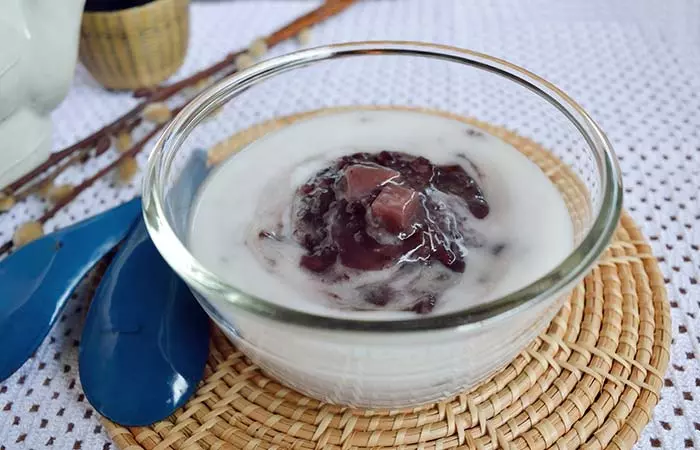
What You Need
- 1 cup of black rice
- 3 cups of water
- ½ cup of sugar
- 1 can of unsweetened coconut milk
- Salt
Procedure
- Add black rice, water, and ¼ teaspoon of salt to a saucepan and bring it to a boil.
- Turn the heat down, cover the saucepan with a lid and let it simmer for 45 minutes.
- Turn the heat back up and stir the sugar, ¼ teaspoon of salt, and ¾ of the can of coconut milk into the mixture and bring it to a boil.
- Reduce the heat and let the mixture simmer (this time leave it uncovered) for another 30 minutes.
- Check to see if the pudding is now thick and the rice is tender but chewy. Cook for a little longer if it has not reached this consistency.
- Remove the pudding from the heat and cool it down by the stirring it occasionally.
- Drizzle the remaining coconut milk on top before serving. Enjoy your black rice pudding!
Kavita, a blogger, prepared a pudding with black rice that took her only 20-30 minutes to make. She writes, “Kids found it yummy and loved it more because of its unusual color (i).”
Black Rice Soup

What You Need
- 3 chicken breasts, boneless and skinless
- 1 cup of black rice
- 1 carrot (diced)
- 1 celery stalk (diced)
- 1 onion (diced)
- 6 cups of chicken stock
- ½ cup of butter
- ¼ cup of all-purpose flour
- 4 cups of half-and-half
- ¼ tablespoon of thyme
- 1 tablespoon of salt
- ½ tablespoon of pepper
Procedure
- Add chicken, carrots, celery, onion, black rice, thyme, salt, pepper, and chicken broth to a stock pot and close its lid.
- Set it to a low temperature and let it cook for 8 hours or overnight.
- Before eating the soup, melt butter in a pan and add flour to it.
- Cook it on a low flame for 1-2 minutes and pour in the half-and-half.
- Cook till the sauce thickens.
- Take out the chicken from the stock pot and shred it with a fork.
- Add it back to the pot along with the sauce.
- Stir well and serve!
Infographic: Important Health Benefits Of Black Rice
Black rice has recently started gaining the attention of health enthusiasts due to its nutritional facts and benefits. Black rice has many benefits and can be incorporated in various ways into the diet, as discussed in the article, but to know about the most important health benefits of black rice, check out the infographic below! Illustration: StyleCraze Design Team
Forbidden rice or black rice benefits go beyond its stunning dark color. This variety of rice is highly nutritious and healthier than regular white rice. It is packed with healthy carbohydrates, dietary fiber, vitamins, minerals, and beneficial phytonutrients. Black rice aids in cardiovascular disease prevention and may also help promote liver, digestive, and eye health. In addition, it may help manage diabetes and weight loss, and is great for the immune system. This rice is gluten-free, has a rich profile of antioxidants, and may help reduce inflammation. However, excess intake can lead to side effects. Hence, moderation is advised.
Frequently Asked Questions
Is black rice the same as wild rice?
No, black rice is not the same as wild rice. In fact, wild rice is not rice at all. But there are many benefits of wild rice.
What is the glycemic indexi A value assigned to foods based on their carbohydrate content and their ability to increase sugar levels in the body. of black rice?
Black rice has a low glycemic index of 42.3.
How long does black rice take to cook?
Black rice takes 30 minutes to cook if pre-soaked and 1 hour if not.
Can black rice be eaten on paleo diet?
No, you cannot eat black rice on a paleo diet as it is a grain and this diet requires you to eliminate all grains.
What is the taste of black rice?
Black rice has a nutty flavor with a slightly sweet tinge to it.
Why black rice is a star superfood?
Black rice is a star superfood due to its anthocyanin content.
Illustration: Marvelous Health Benefits Of Forbidden Rice (Black Rice)
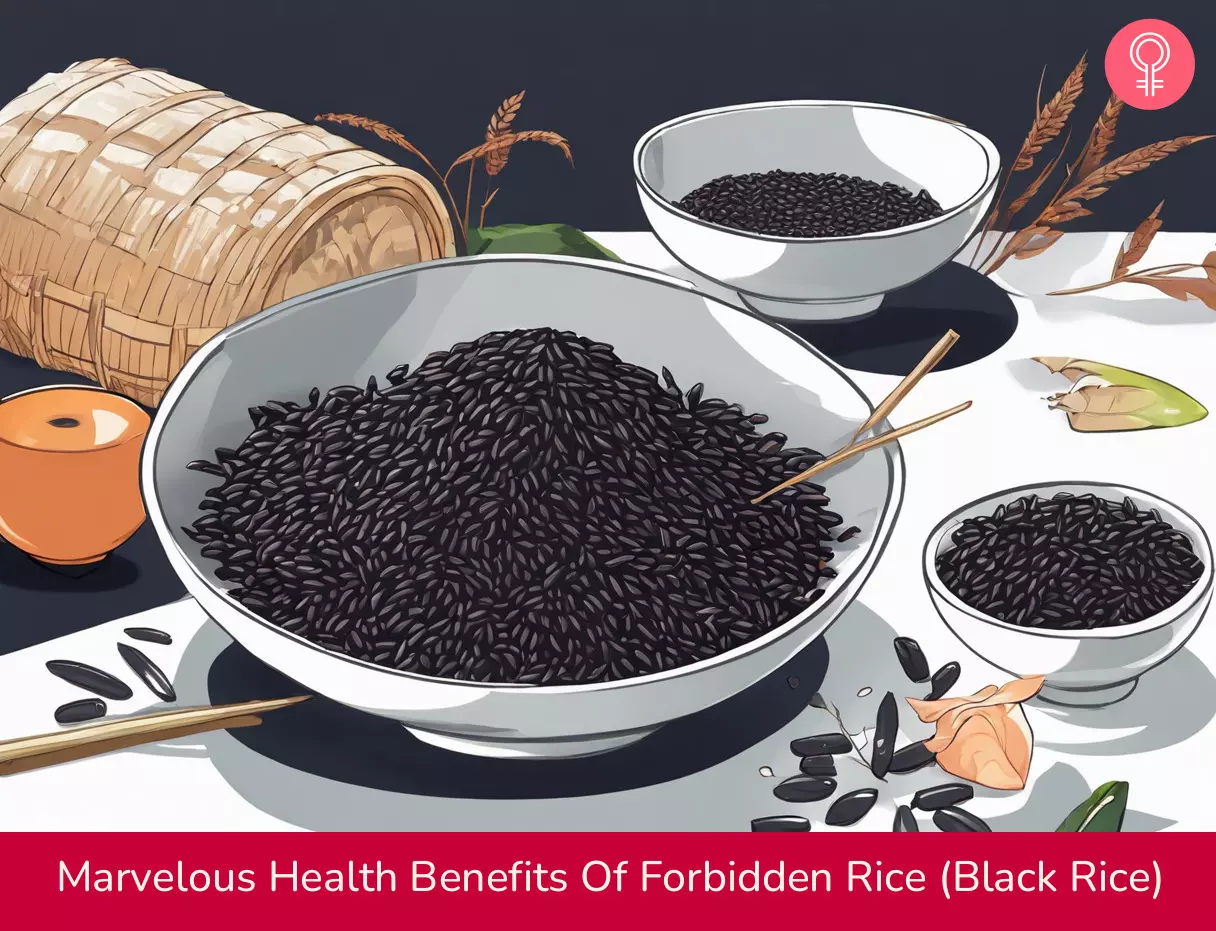
Image: Stable Diffusion/StyleCraze Design Team
Learn about the amazing health benefits of black rice! Discover how to incorporate it into your diet with delicious recipes. Check out this video to get the facts on their nutrition and more!
Personal Experience: Source
StyleCraze's articles are interwoven with authentic personal narratives that provide depth and resonance to our content. Below are the sources of the personal accounts referenced in this article.
i. Black Ricehttps://kavitasahariamyroom.wordpress.com/2010/08/17/black-rice/
References
Articles on StyleCraze are backed by verified information from peer-reviewed and academic research papers, reputed organizations, research institutions, and medical associations to ensure accuracy and relevance. Read our editorial policy to learn more.
- “Phenolic profiles and antioxidant activity of black rice bran of different commercially available varieties.” Cornell University, USA.
- “Anthocyanins and Human Health: An In Vitro Investigative Approach.” University of Illinois, USA.
- “Anticancer activities of an anthocyanin-rich extract from black rice against breast cancer cells in vitro and in vivo.” Third Military University, China.
- “Protective Effects of Black Rice Bran against Chemically-Induced Inflammation of Mouse Skin.” Ajou University, Korea.
- “Meal replacement with mixed rice is more effective than white rice in weight control, while improving antioxidant enzyme activity in obese women.” Hanyang University, South Korea.
- “Anthocyanin extract from black rice significantly ameliorates platelet hyperactivity and hypertriglyceridemia in dyslipidemic rats induced by high fat diets.” Sun Yat-sen University, China.
- Hypolipidaemic effects of cyanidin 3-glucoside rich extract from black rice through regulating hepatic lipogenic enzyme activities.” Korea Food Research Institute, South Korea.
- “The role of black rice (Oryza sativa L.) in the control of hypercholesterolemia in rats.” University of São Paulo, Brazil.
- “Red and black rice decrease atherosclerotic plaque formation and increase antioxidant status in rabbits.” Sun Yat-sen University, China.
- “Black rice (Oryza sativa L.) extract attenuates hepatic steatosis in C57BL/6 J mice fed a high-fat diet via fatty acid oxidation.” Rural Development Administration, Republic of Korea.
- “Effects of anthocyanins on learning and memory of ovariectomized rats.” Medical University-Sofia, Bulgaria.
- “Dietary intakes of berries and flavonoids in relation to cognitive decline.” Harvard University, USA.
- “Germinated Thai Black Rice Extract Protects Experimental Diabetic Rats from Oxidative Stress and Other Diabetes-Related Consequences.” Chiang Mai University, Thailand.
- “Health benefits of dietary fiber.” University of Kentucky, USA.
- “Cardiovascular benefits of dietary fiber.” Harvard University, USA.
- “Anthocyanins inhibit airway inflammation and hyperresponsiveness in a murine asthma model.” Korea Research Institute of Chemical Technology, Korea.
- “Anthocyanins—More Than Nature’s Colours.” Cooperative Research Centre for Bioproducts, Australia.
- “Black rice anthocyanidins prevent retinal photochemical damage via involvement of the AP-1/NF-κB/Caspase-1 pathway in Sprague-Dawley rats.” Chengdu Medical College, China.
- “Antioxidant and Anti-Inflammatory Properties of Anthocyanins Extracted from Oryza sativa L. in Primary Dermal Fibroblasts” Mahidol University, Thailand.
Read full bio of Mollie Meldahl
Read full bio of Arshiya Syeda
Read full bio of Ravi Teja Tadimalla
Read full bio of Payal Karnik





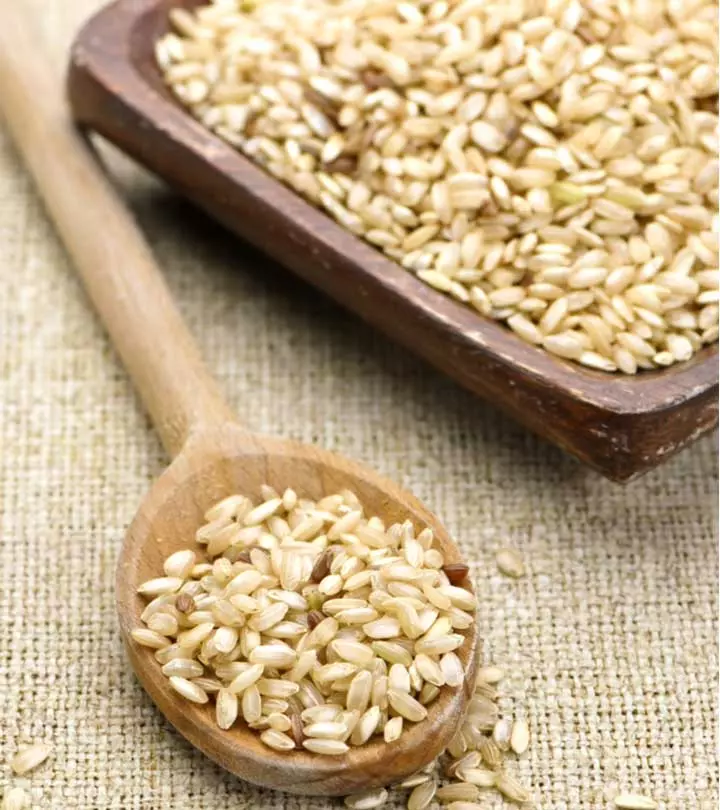
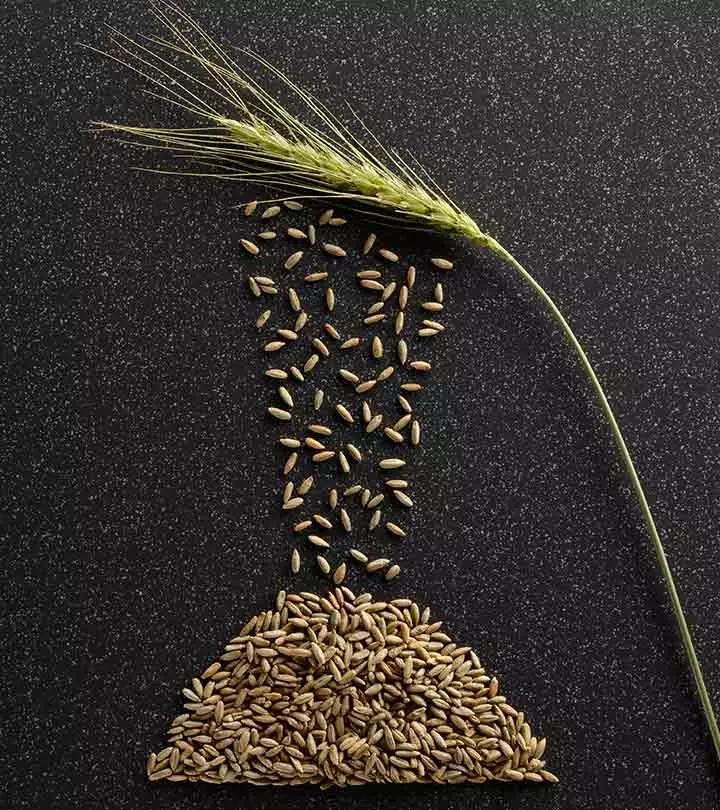
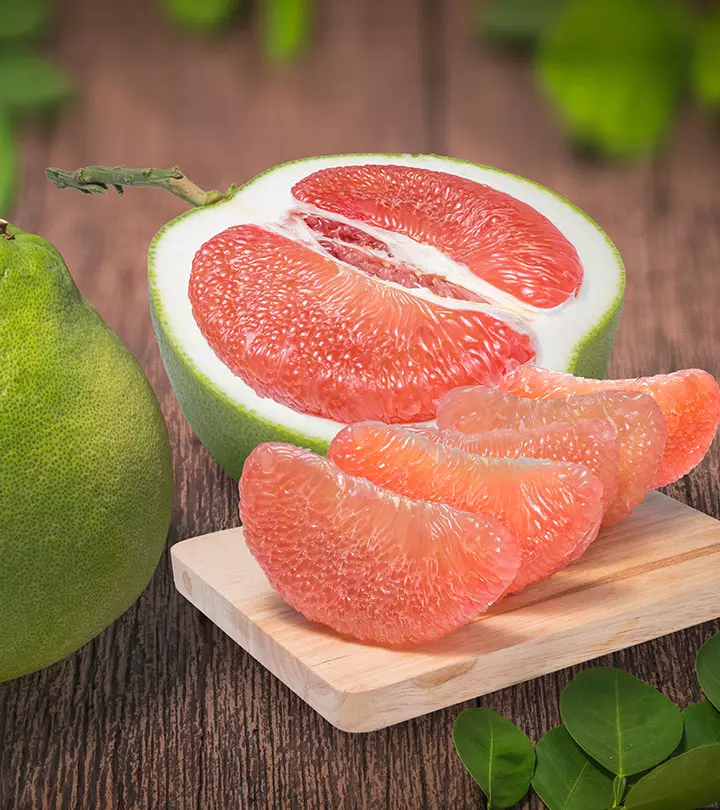
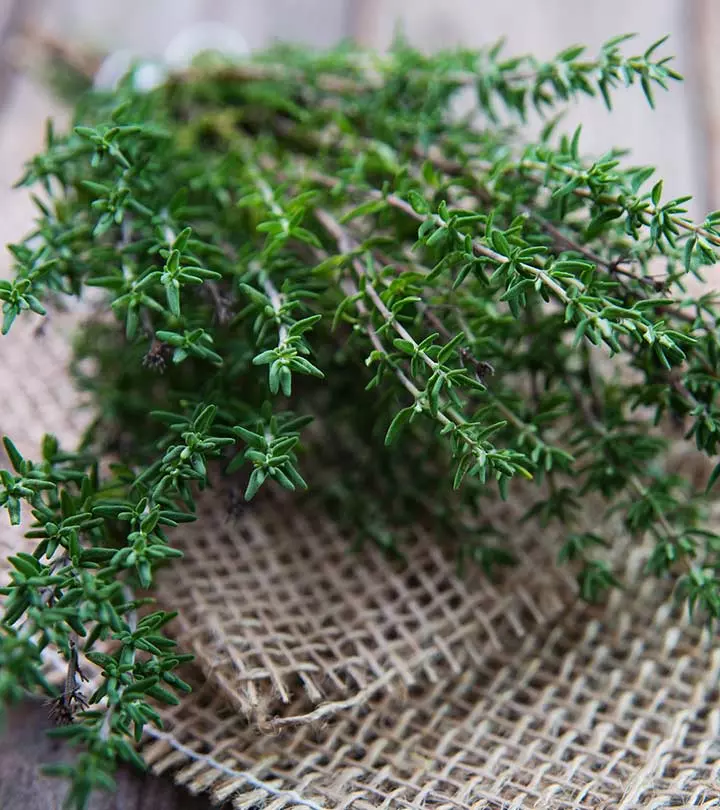
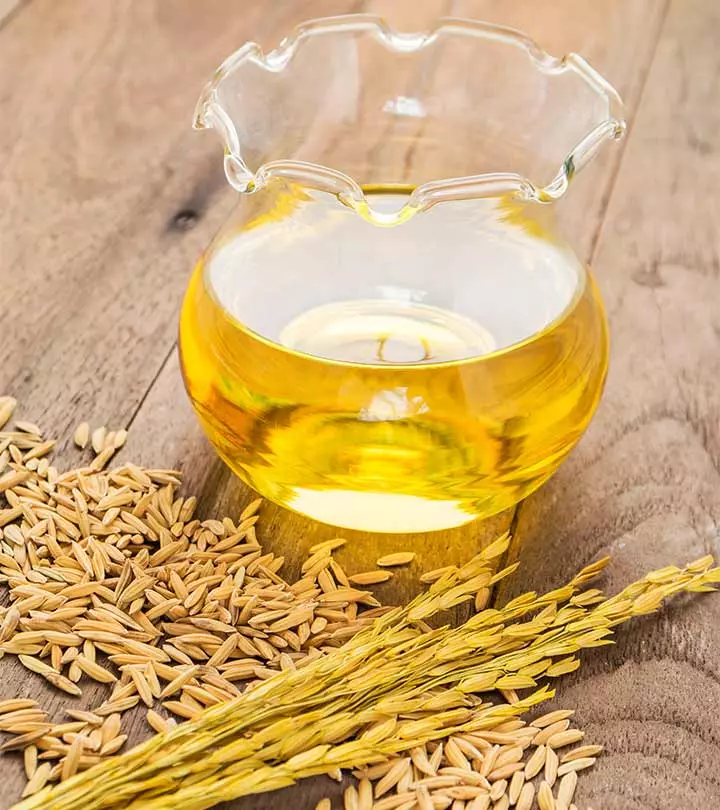
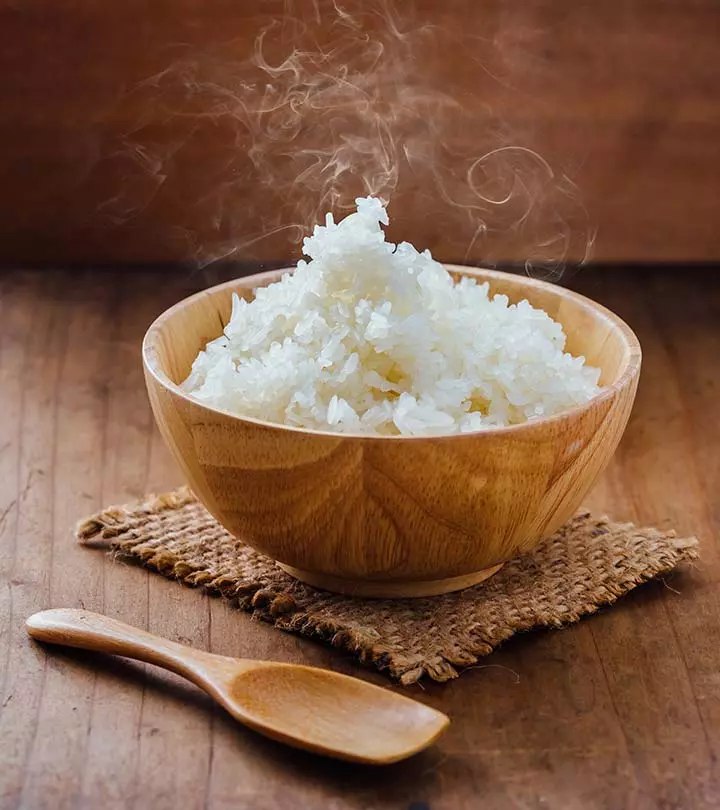
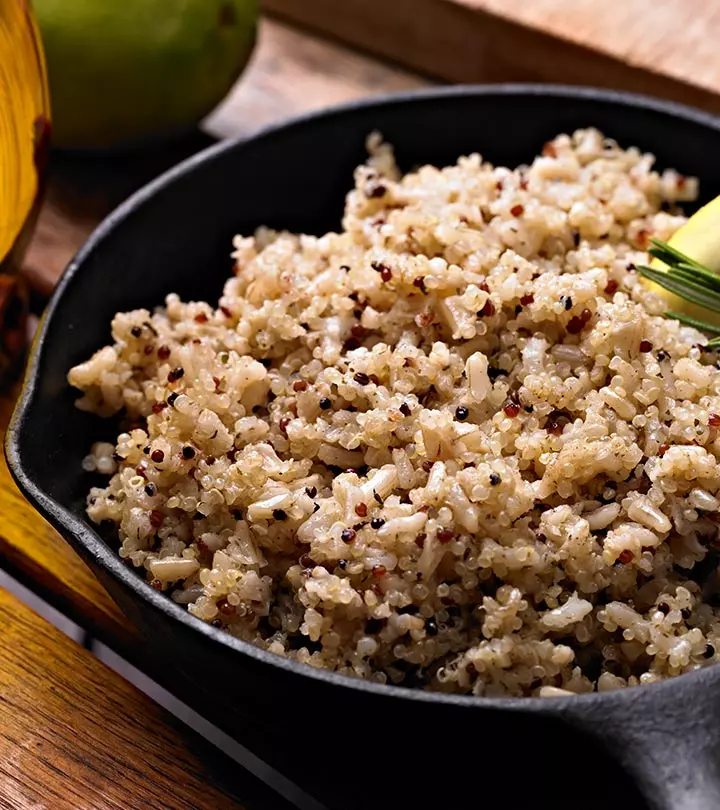


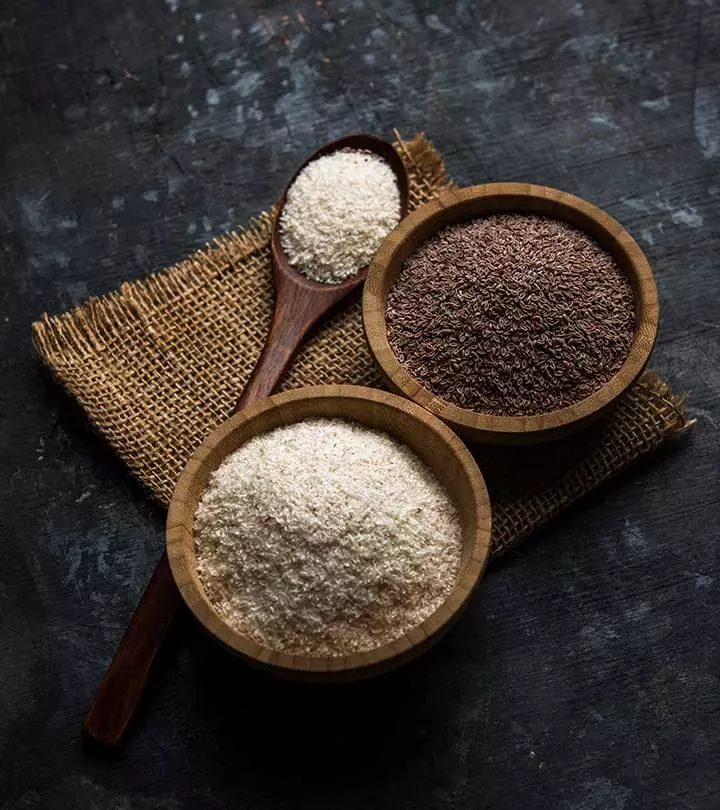
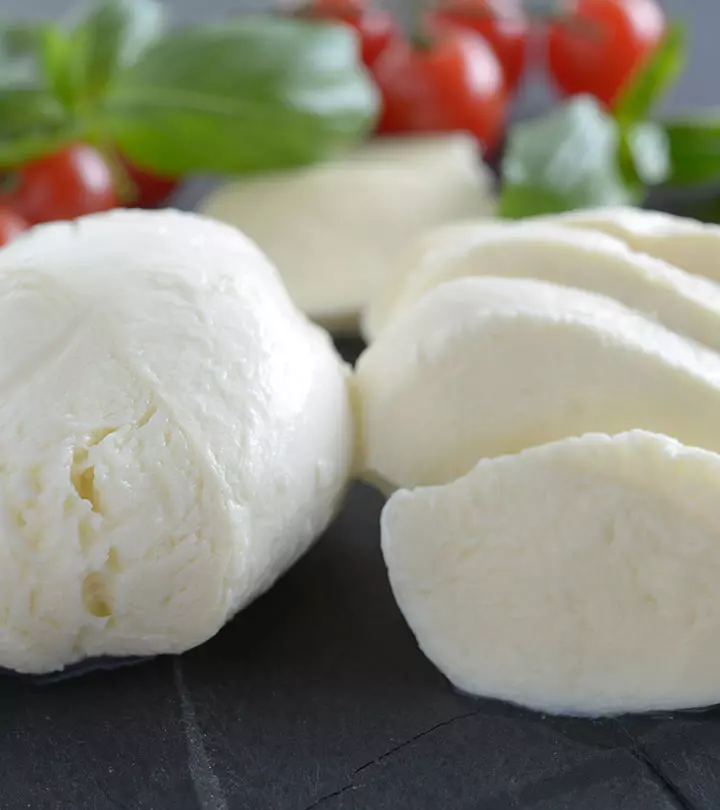

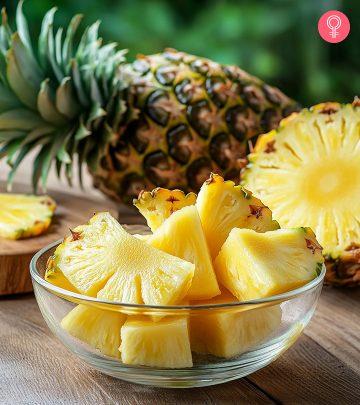
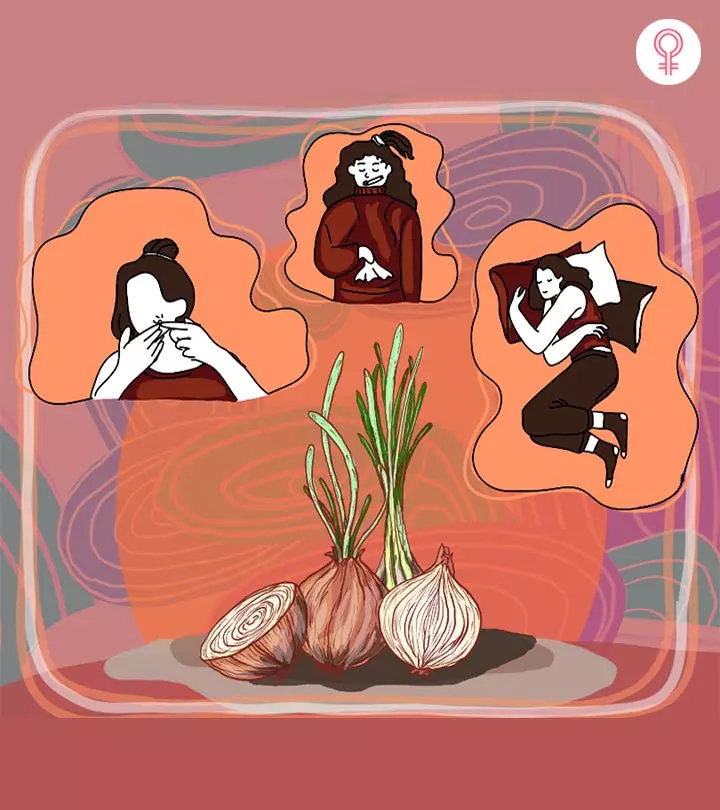
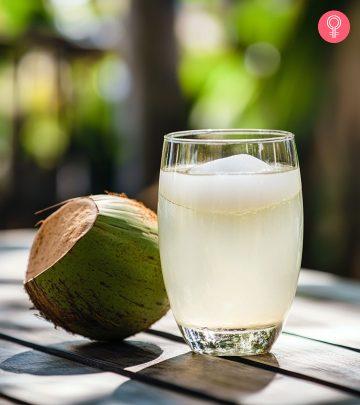
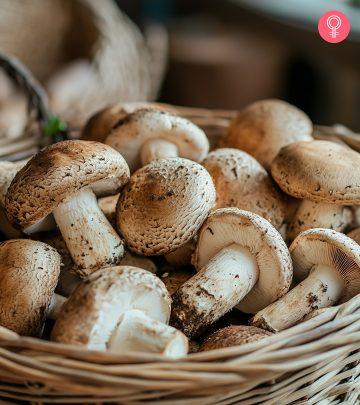

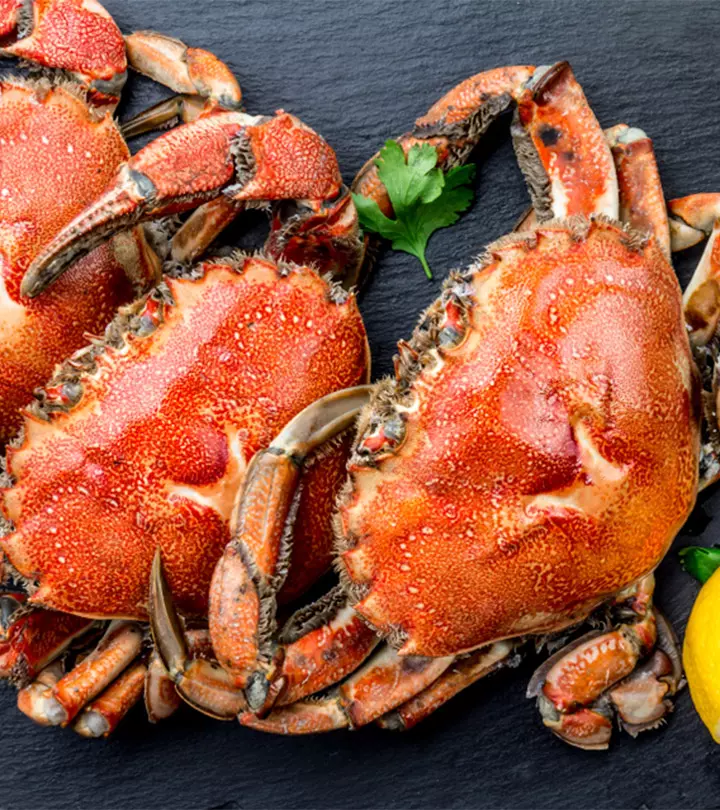
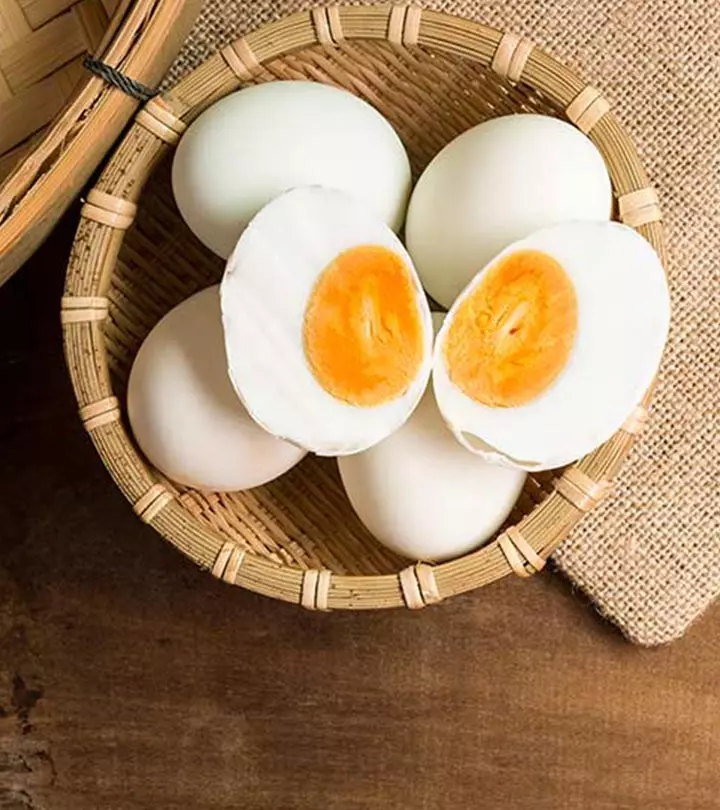

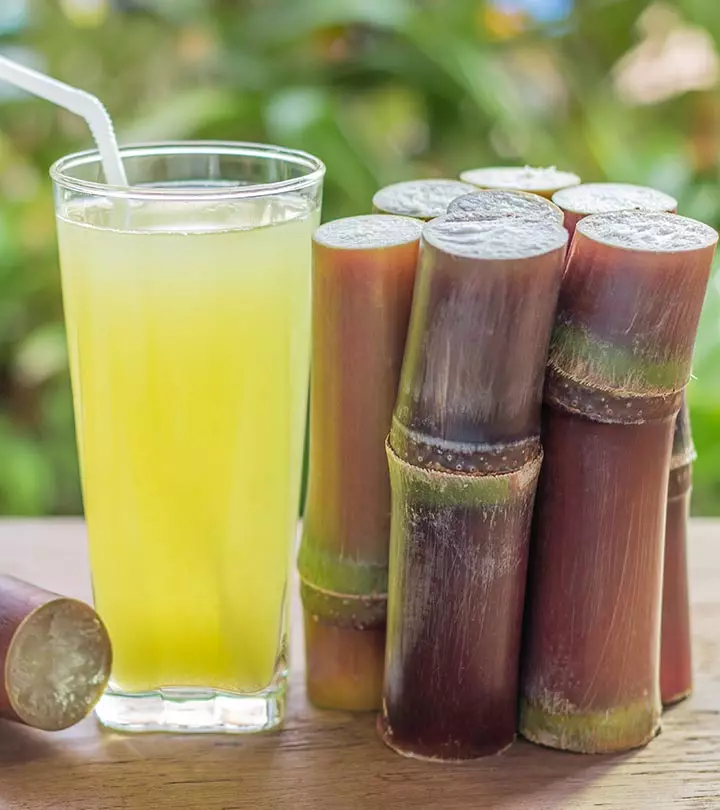
Community Experiences
Join the conversation and become a part of our empowering community! Share your stories, experiences, and insights to connect with other beauty, lifestyle, and health enthusiasts.